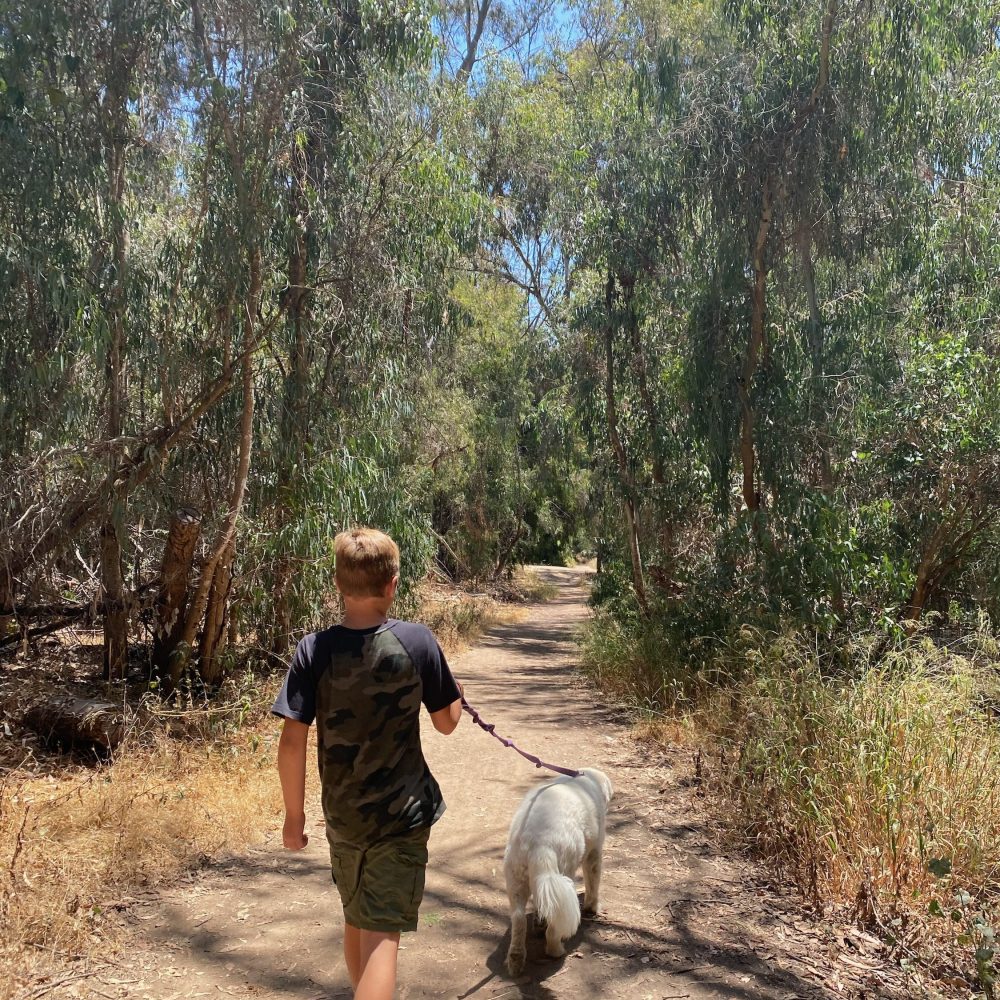
From the Santa Barbara County Fire Department
In recent weeks, Santa Barbara has experienced some of its hottest heat waves in nearly 15 years. This Labor Day weekend, temperatures are forecasted to rise to well above average. During times of sunny, warm weather, many like to take the opportunity to get outdoors and go hiking. During our recent heatwave, the Santa Barbara County Fire Department responded to multiple calls for service due to heat-related illness for both humans and their dogs, resulting in several helicopter hoist rescues and the unfortunate death of a dog.
The Santa Barbara County Fire Department would like to remind hikers of steps they can take to ensure a safe hiking experience for both themselves and their dogs. Below are some guidelines to follow while hiking as well as a message from Dr. Dave Dawson, DVM on how to prepare for the hike and keep yourself and your pet(s) safe.
- Pay attention to weather forecasts. Sites like Weather.com let you check forecasts by location and ZIP code. The site offers hourly temperature predictions for the current day and for the following day.
- Don’t be overly ambitious. A hot day isn’t the best time to finally do that 10-miler with 2,000 feet of climbing. If you’re intent on getting out, scale back your expectations and save the tough trails for another day.
- Choose the right hike. There are many trails to pick from in Santa Barbara County from very easy to very difficult and strenuous. To help you decide which hike is best for you (and your pet), check out the website santabarbarahikes.com. It has a description and maps of all trails in Santa Barbara County.
- Hike early in the day. Temperatures can easily be 20-25 degrees cooler in the morning than in the afternoon.
- Avoid the most intense sun. Direct sun will increase heat-related stresses and the risk of sunburn. Try to find shaded trails and avoid hiking between 10 and 4.
- Keep it loose and light. When it comes to clothing, remember “The Three L’s: Lightweight, Loose-fitting, Light-colored.
- Wear a hat. A lightweight, light-colored hat with a broad brim to keep the sun off your face and neck will help you stay cool.
- Use (and pack) sunscreen. Exposed, sunburned skin will only make it more difficult for your body to stay cool.
- Don’t travel alone. If you’re just going for a hike in a nearby, well-traveled area, you’re as safe there as anywhere. But if you travel through heavily forested areas with steep canyons and winding trails, you can easily get lost or injured. Traveling with a partner will help you in many ways, especially if he or she is an experienced hiker. People in pairs are much less likely to panic. They can assist one another up steep grades and apply first-aid when needed.
- Know where you’re going. Stay on clearly marked or well-traveled trails. A map, a compass and/or a GPS unit is a must for any kind of serious hike. A cell phone can also be very useful. Naturally, it has to be usable in the area you hike. Not all units will continue to function in every area. Get the details of where you plan to go and ask someone who knows.
- Take some basic gear. A simple first aid kit can also be a lifesaver. Gauze and bandages, anti-bacterial cream and other standard items are essential. All these things are small and lightweight. No need to take a miniature doctor’s office, just the basics.
- Hydration. On hot days, your body can lose large amounts of water through perspiration. The general rule is that you can sweat roughly a quart of water every hour—and even more when hiking uphill or in direct sunlight. Proper hydration is essential to the health of the body’s organs, including the brain. Dehydration can lead to impaired brain functioning, which then results in confusion and impaired judgment. Blood can also thicken, forcing the heart to work harder. Start the hydration process before you go out. Begin to hydrate a couple of hours before you hit the trail. Drink frequently, instead of guzzling a bunch of water all at once, take smaller and more frequent drinks of water.
Safety Measures for Pets from Dr. Dave Dawson, DVM
We are fortunate in Santa Barbara to be able to enjoy our outdoor paradise with our pets. However, when the weather heats up, it can be very dangerous for your pet. The following simple precautions should help you avoid a tragedy:
- Ensure your pet is healthy to begin with by seeing your veterinarian at least annually.
- Your dog should be exercised regularly. Do not embark on a long hike when they have not been hiking for a long time (i.e. think about going 1/4 of a normal distance when hot).
- Start early in the morning to avoid the excessive heat of the day. Leave them indoors when excessive heat is present (80 degrees or more).
- Bring more water than you think you will need with a collapsible bowl.
- Never leave your pets alone in a parked car!
- Avoid walking your dog on hot asphalt (place your hand on asphalt for 10 seconds to assess).
- Do not shave your dog – the layers of a dog’s coats protect them from overheating and sunburn.
- Ensure your pet is not overweight.
Also, know the symptoms of overheating in pets:
- Excessive panting, difficulty breathing
- Increased heart and respiratory rate
- Drooling
- Weakness
- Seeming “distant” or even unresponsive or collapse
- Seizures, bloody diarrhea or vomiting
- Temperatures over 104 degrees
Pets have limited ways to cool down with dogs relying only on panting – an inefficient means of cooling. Do not put your pets in danger of heat-related death. You love them too much!

